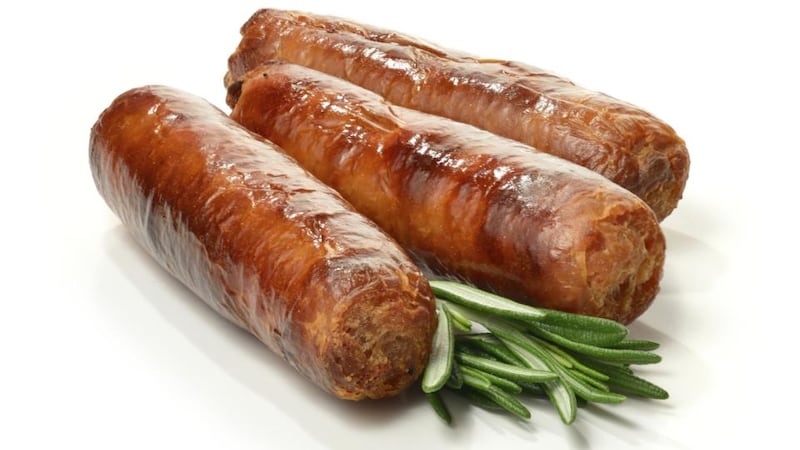Do you play the lottery? You are more likely to be hit in your home by a crashing aeroplane, a one in 250,000 chance, than to win the lotto. And there is about an equal possibility of being hit by lightning as winning the jackpot – about 10 million to one, according to a British Medical Journal study. So why do you bother to play the lotto?
Most people have an uneven relationship with numbers and statistics and how to understand what they tell us. Most times it doesn’t really matter. For example, knowing that you have a one in 50,000 chance of death while playing soccer is not going to stop people going out for an occasional kick-about.
And the statistical finding that you have a one in 2,000 chance of needing emergency treatment in the next year after being injured by a bed, mattress or pillow is not going to keep any of us out of the leaba.

This does not mean we can forget about trying to understand what the numbers mean because sometimes it can be a matter of life and death. For example, the Irish Cancer Society warns that one in three cancers that occur in Ireland are related to smoking. It also tells us that we can reduce our chances of getting any cancer by 50 per cent if we change our lifestyle. These are important numbers.
Few of us are mathematicians but all of us can understand the basics: a sale offering 30 per cent off is good, but a one-third-off sale is slightly better.
And we can understand the logic behind statistics that tell us driving during a rain storm increases the risk of having an accident. But people have a bad habit of being very selective about what statistics they take on board.
The Cancer Society’s recommendations on exercise, diet and other issues could have a profound effect on public health if we followed them, but we tend to ignore the warnings. We also tend to put aside advice from bodies such as the US National Institutes of Health who tell you that obesity ramps up the risk of developing high blood pressure, stroke, Type 2 diabetes, arthritis and a collection of other disorders.
Shocking increase
Then there is the issue of drinking and its impact on us personally and on society in general. One in 10 cancers in men and one in 33 in women are caused by drinking, Alcohol Action Ireland says. And Garda statistics show that about one in three fatal road traffic incidents are directly attributable to alcohol consumption. Too few people heed what the numbers are saying to us.
Our ability to understand what the numbers mean can be compromised, however, when they are presented in a way that is designed to make people misunderstand, and this week’s processed meat and red meat story is a prime example.
People’s take away message from the World Health Organisation’s International Agency for Research on Cancer was clear: eating two rashers or two sausages a day raised your risk of cancer.
“The experts concluded that each 50g portion of processed meat eaten daily increases the risk of colorectal cancer by 18 per cent,” the agency’s statement read. The release wanted us to focus on the 18 per cent figure and so we did. But this is spectacularly above the actual increase in cancer risk posed by eating processed and red meats.
On Friday, the World Health Organisation said the original message from its cancer report had been “misinterpreted” and clarified it was not asking people stop eating processed meats. WHO released the statement in response to queries. But how had this “misinterpretation” occured?
“There are a few common misconceptions and misrepresentations of risk data,” says Prof Kevin Mitchell, associate professor of genetics and neuroscience at Trinity College Dublin. “The most common is to report a relative increase in risk as if it were an absolute increase.”
Most people took the 18 per cent to represent the absolute increase in the numbers developing bowel cancer, which would be a shocking increase indeed. But in fact the 18 per cent figure related to the relative increase in risk.
Bowel cancer is not uncommon but the baseline risk for the general population is a relatively low 0.68 per cent, Mitchell says. The 18 per cent in fact was an increase in this baseline. So eating those rashers increases the risk of cancer from 0.68 per cent to 0.8 per cent. “It should be reported as an increase in risk of 0.12 per cent which sounds a lot less scary,” he says.
Misuse of information based on statistics is not uncommon. “The headlines are designed to pull out scare-mongering facts,” says Dr Caroline Brophy of the department of maths and statistics at Maynooth University.
The agency’s study was an observational one and showed a tenuous connection between red meat and cancer, she said. But these were correlations rather than proof of causation.
Researchers frequently allow confusion to arise between relative and absolute risk, says Prof Padraig Cunningham, professor of knowledge and data engineering in the School of Computer Science at University College Dublin.
“If you have a low-incidence condition then a small increase on a low-incidence event can look quite dramatic.”
He cites as an example a study which declared that pilots faced a 100-fold increase in the risk of being involved in an air crash. Yet the baseline risk of being in a crash is absolutely tiny, so the pilot risk is meaningless.
Highest risk
A 1980s study of the contraceptive pill and its impact on cervical cancer said that the pill increased cancer risks by 47 per cent, but this was relative risk. “The near 50 per cent seemed like a big deal but its impact on life expectancy was quite small, amounting to taking 11 days off your life expectancy at a population level,” says Cunningham.
“There is pressure on researchers to go for relative risk as it makes them seem as if they had discovered something dramatic. Journalists want exciting headlines too,” he says.
It is important for people to understand this, he believes. “This is going to happen increasingly. It is important for people to be able to interpret what is important and not important,” he says.
Confusion over relative versus absolute risk does not diminish the importance of the agency’s report. The study shows that eating these products is certain to increase risk to the consumer, and so these foods are placed in the highest risk category along with cigarettes and plutonium, two other things that are certain to increase cancer risks.
The increased risk from red and processed meat is tiny, amounting to about three cases in 100,000 people. However, this causes concern at a population level. The vast majority of people around the world eat these kinds of foods so overall the numbers of possible cancer cases involved would be large, making the findings important at a public health level.

















